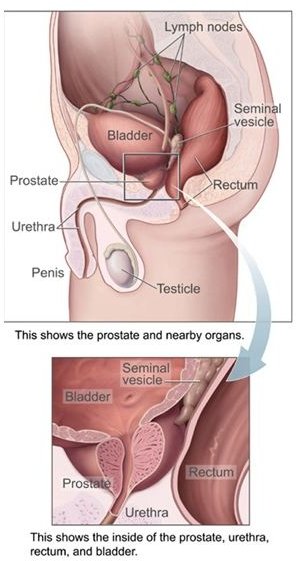What is a Prostate Exam and How is it Done?
Prostate Exam

The prostate is the male sex gland that helps produce semen. It is about the size of a walnut and is located near the bladder. Click on image to enlarge.
The prostate exam, also known as digital rectal exam (DRE), can help detect prostate cancer. The earlier it is caught, the better the outcome.
Cancer of the prostate gland is the third most common cause of death in men of all ages. In men over the age of 75 years, it is the most common cause of death related to cancer. It is rare in men younger than the age of 40. African Americans and those with a family history of prostate cancer are most at risk. Japanese men and vegetarians appear to have the lowest risk.
The American Cancer Society recommends men should have yearly testing beginning at the age of 50. Those who are at a higher risk should begin at the age of 45. Discuss with your health care provider when the right time is for you to begin your yearly prostate exams.
How is a Prostate Exam Done?
There are no special preparations before a prostate exam.
Your health care provider will normally have you stand with your feet apart and have you bend forward with your arms or elbows on an examination table.
He or she will then insert a gloved, lubricated finger into your rectum to feel the prostate gland for any abnormalities.
The prostate exam usually takes about 5 minutes. It may be uncomfortable but it should not be painful. While being examined, it is best to relax and take some deep breaths.
The procedure does not cause damage to the prostate gland.
Prostate Self Exam
Prostate self exams are not recommended to replace exams by a professional. You will not be able to reach in far enough to get an accurate feel of the prostate and, even if you could, you will not know what to feel for.
Disclaimer
Please read this disclaimer regarding the information contained within this article.